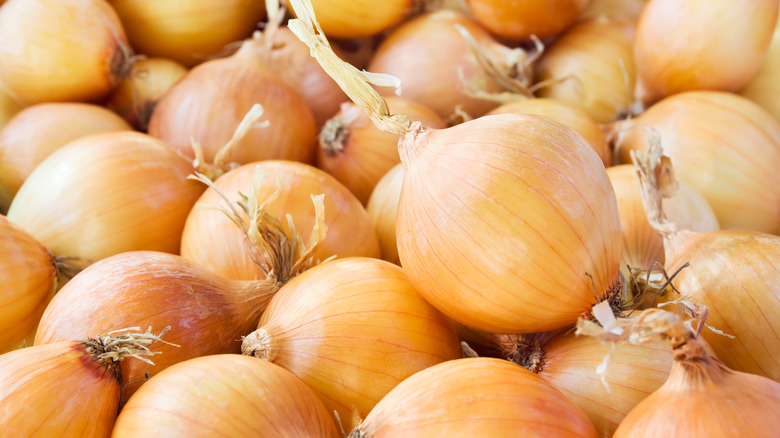Not Sure Which Onion To Cook With? Ina Garten Has You Covered
If you cook your way through Ina Garten's endless trove of recipes, you'll notice the specificity of her ingredient lists. For all her use-what-you-have ethos, she's not shy about playing favorites when it comes to everyday essentials. (Case in point: She's been using the same brand of olive oil for 20 years.) Likewise, she'll never leave you guessing over which type of onion to use.
Yellow onions appear most frequently in Ina's recipes, from dips to soups to braises. It's not surprising that, in response to a reader's query about which type of onion to use in a dish if a recipe doesn't specify, Ina wrote that she "would always assume it's calling for yellow onions." While Ina's kitchen is surely stocked with more than one type of onion (how else would she make her herb-roasted red onions or her shallot chicken?), the yellow variety is her reliable default. Here's why the humble allium stands apart from the rest.
Mellow yellow
There's a reason yellow onions are the most popular variety in the U.S., including Ina Garten's kitchen in the Hamptons. When cooked, they bring more classic oniony flavor than their mild white and sharp red counterparts. Meanwhile, their sturdy cell walls help them maintain their structure over long periods of cooking time (we're looking at you, caramelized onions), during which their flavor trades pungency for subtle sweetness. While their intense flavor and high sulfur content don't always play well in raw dishes, they're a safe bet for any cooked dish that calls for onions.
Taste and texture aside, yellow onions are an economical choice. Not only are they generally the cheapest on the market, but they also last up to six weeks in a cool, dark, dry place. Ina is not alone in her preference for yellow onions. Thanks to their versatility and relative cheapness compared to other onion varieties, food writer Kathleen Purvis called them "kitchen workhorses" in The Seattle Times.

